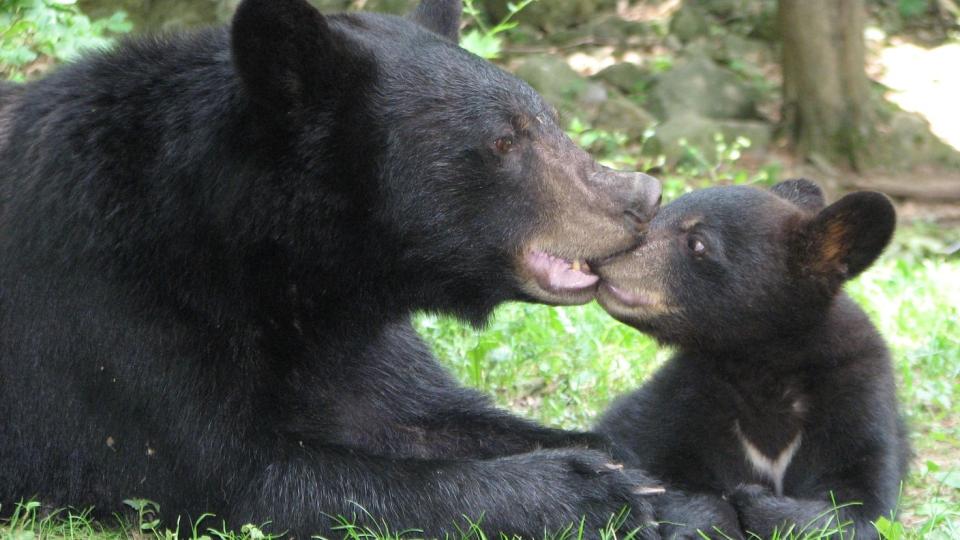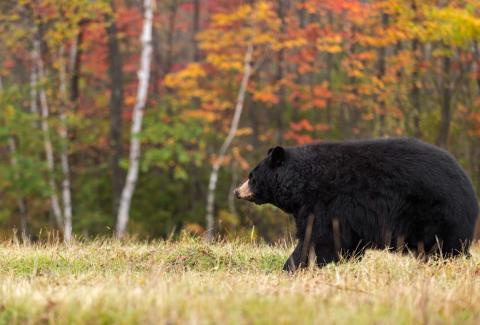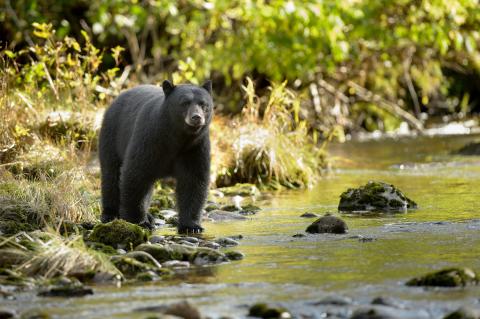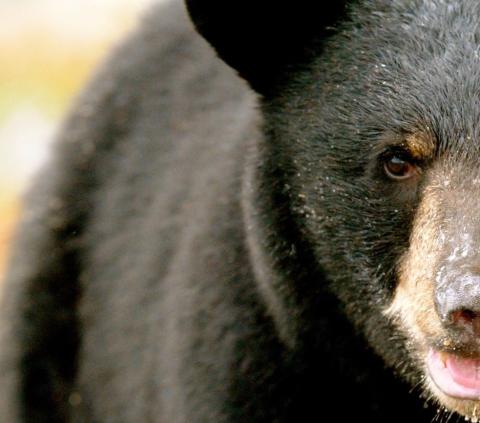What do black bears look like?
It's not surprising that they're usually black, but they can occasionally have a white spot on their chest or a cinnamon coat. They typically have long, straight ears and a long snout.
What do black bears eat?
They're omnivores, and most of their diet is plant-based. They'll also eat insects and the occasional reptile, amphibian, deer or small woodland creature. They eat a lot, and must constantly forage for food.
Where do black bears live?
In the fall, bears find suitable dens to settle in for a long hibernation. In the spring, they venture out into the wild to eat.
How can you tell a black bear from a grizzly bear?
- Black bears are smaller and darker in color than grizzlies.
- Black bears have longer, straighter ears. Grizzlies have short, flat ears.
- Grizzlies have larger shoulders and claws.
- Black bears have straight snouts, while grizzlies have more dished-in faces.
- A black bear's backside is higher than its shoulders when walking on all fours. A grizzly's backside is lower than its shoulders.
For more information on the difference between black bears and other types of bears, consult the National Park Service.



